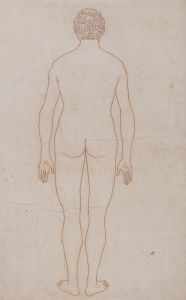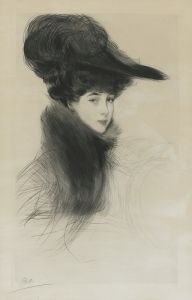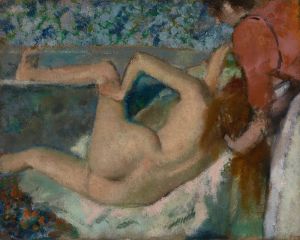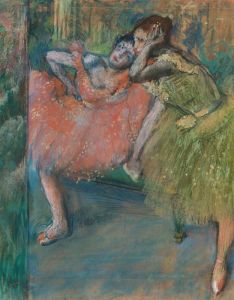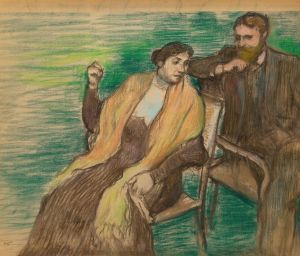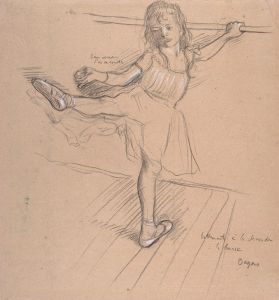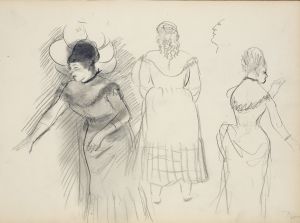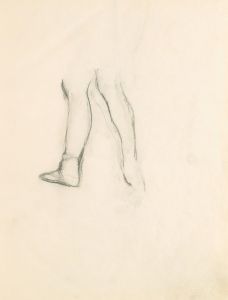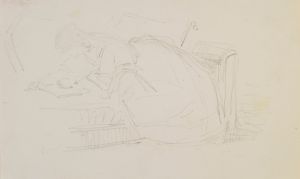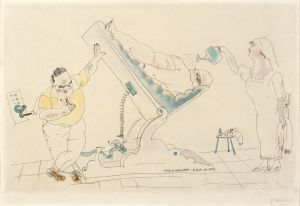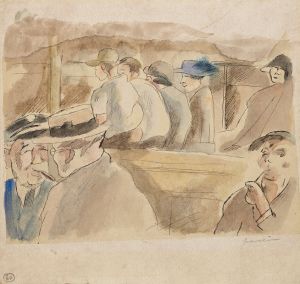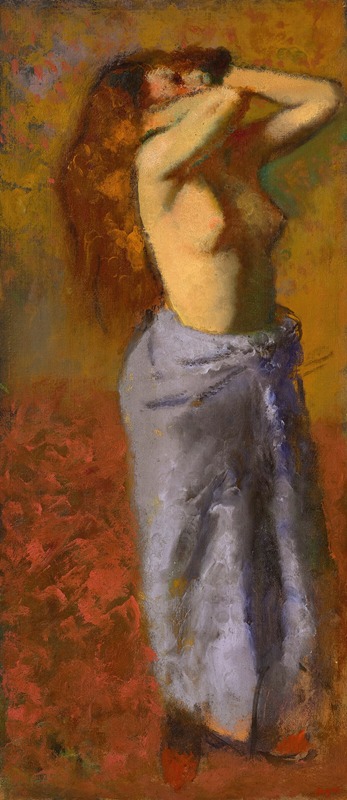
Femme en peignoir bleu le torse découvert
A hand-painted replica of Edgar Degas’s masterpiece Femme en peignoir bleu le torse découvert, meticulously crafted by professional artists to capture the true essence of the original. Each piece is created with museum-quality canvas and rare mineral pigments, carefully painted by experienced artists with delicate brushstrokes and rich, layered colors to perfectly recreate the texture of the original artwork. Unlike machine-printed reproductions, this hand-painted version brings the painting to life, infused with the artist’s emotions and skill in every stroke. Whether for personal collection or home decoration, it instantly elevates the artistic atmosphere of any space.
"Femme en peignoir bleu le torse découvert" (Woman in a Blue Robe, Torso Exposed) is a painting by the renowned French artist Edgar Degas. Degas, born on July 19, 1834, in Paris, is widely recognized as one of the founders of Impressionism, although he preferred to be called a realist. His works are celebrated for their depiction of movement, particularly in the context of ballet dancers, and his innovative use of perspective and composition.
This particular painting, "Femme en peignoir bleu le torse découvert," is an exquisite example of Degas's ability to capture intimate and candid moments. The title translates to "Woman in a Blue Robe, Torso Exposed," which aptly describes the subject of the painting. The woman is depicted in a relaxed, informal pose, wearing a blue robe that is partially open, revealing her torso. This portrayal is characteristic of Degas's interest in the private, unguarded moments of everyday life.
Degas often explored themes of femininity and the female form, and this painting is no exception. The use of a blue robe adds a touch of color contrast to the otherwise muted palette, drawing attention to the subject's form and the delicate handling of light and shadow. The artist's technique in this piece reflects his mastery of both drawing and painting, with careful attention to the texture of the fabric and the softness of the skin.
The painting is believed to have been created in the late 19th century, during a period when Degas was increasingly focused on depicting women in various states of undress, often in the context of bathing or grooming. This focus was part of a broader trend among artists of the time to explore more intimate and personal aspects of life, moving away from the grand historical and mythological subjects that had dominated earlier art.
Degas's approach to these subjects was both innovative and controversial. He often used pastels, a medium that allowed for a more spontaneous and expressive handling of color and form. In "Femme en peignoir bleu le torse découvert," the use of pastels would have enabled Degas to achieve the soft, almost ethereal quality of the woman's skin and the fluidity of the robe.
The painting is also notable for its composition. Degas frequently employed unusual angles and perspectives, influenced by his interest in photography and Japanese prints. In this work, the angle is slightly elevated, giving the viewer a sense of looking down upon the scene, which adds to the feeling of intimacy and immediacy.
"Femme en peignoir bleu le torse découvert" is a testament to Degas's skill in capturing the subtleties of human form and emotion. It reflects his ongoing fascination with the private lives of women and his ability to convey a sense of presence and immediacy in his work. Today, Degas's paintings, including this one, are celebrated for their beauty, technical mastery, and the unique insights they offer into the lives of their subjects.
As with many of Degas's works, the exact details of the painting's provenance and current location may not be widely documented, but it remains an important piece within the broader context of his oeuvre and the Impressionist movement.





